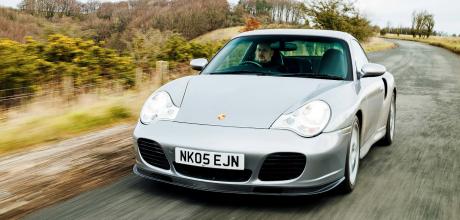2004 Porsche 911 Turbo S Manual 996.2
It’s the one-year special built to sign off the 996-generation in style. How does it drive today?
Written by Kyle Fortune
Photography by Ali Cusick
996: THE LAST HURRAH
Can the 450hp Turbo S still excite today?
996 Turbo S
Kyle Fortune wonders if the run-out 996 special should still be held in such high regard today
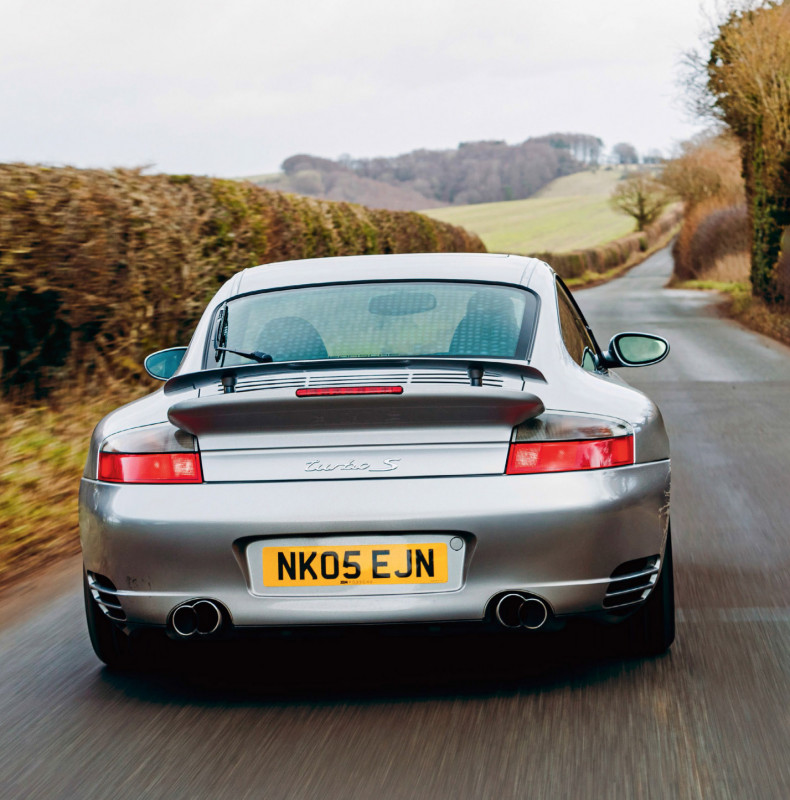
Written by Kyle Fortune Photography by Ali Cusickhere’s always a defining point in a drive, a moment of clarity, and today it’s a tight hairpin climbing out of a valley. A few runs through it, in both directions for Ali Cusick’s camera, is revealing. The Turbo S feels light, deft, agile and, yes, monstrously quick. There’s the briefest of pauses as I push the accelerator, before the 3.6-litre twin-turbo flat six really digs in and delivers its power and torque to the wheels best suited to exploiting it. The potential is huge, which could be a concern on such a small road, but the 996 – even here with the shapely, wider hips of the Turbo S – feels compact, which only adds to its effectiveness.
“The Turbo S is perhaps the most compelling demonstration of the enormous capability of the 911”
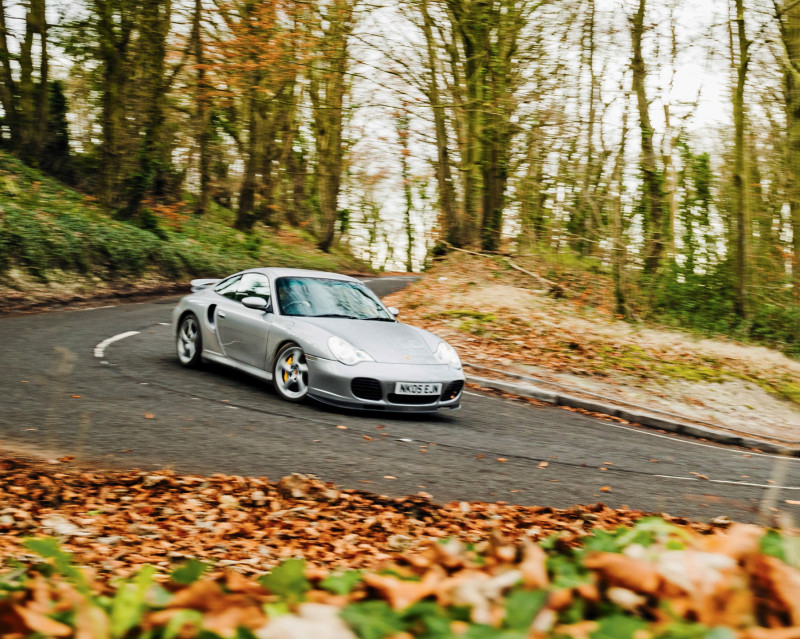
Four hundred and fifty horsepower shouldn’t feel as brisk as it does today. To think that it’s a number which is applied to a Carrera S these days seems ludicrous. As does the fact that this car’s 992 Turbo S relation packs 640hp to deliver performance which is in the other-worldly league. On the drive south to meet editor Lee Sibley and the beautiful GT Silver 996 Turbo S manual Coupe, I was concerned that time would have diminished the 996 Turbo S’s performance. Faded the legend, even. That expectation was compounded by the fact that my transport to the rendezvous was a Taycan 4S.
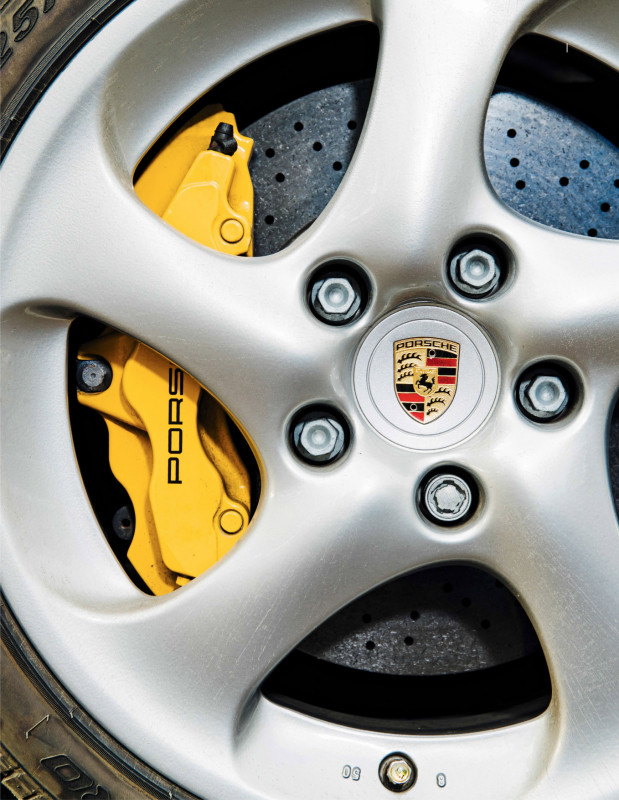
Porsche’s middling plug-in saloon actually offers performance that betters the 996 Turbo S in the 0-62mph sprint. However, as clever as the battery car is, it’s nowhere near as compelling to drive. As soon as I meet with the 996 Turbo S there’s a desire to get in and experience it. The Taycan is a device, an effective one admittedly, but in this company it’s surpassed on so many levels. Previous drives of 996 Turbos have always been special – I drove these on Porsche’s press fleet when they were new, and have done many times since. Each drive remains tattooed on my memory. There were always moments to savour – although expectations change as time marches on – that the Turbo S produced back in 2004/05 which, count ‘em, is 19 years ago.

Indeed, the 996 Turbo S was a one-year special. It was a run-out car that was built in a series of just 1,500 examples, in Coupe and Cabriolet versions, with the open-topped car accounting for around two-thirds of the sales. Any limited-run Porsche is going to be interesting, and there’s a feeling that with the Turbo S the factory did everything it could to ensure good homes were found for it. After all, this car would have been running down the line at the same time as 997 Carreras, making it a tough sell for the dealerships.
With that new 911 grabbing all the attention, Porsche threw everything at the Turbo S. This meant that for a few hundred pounds shy of £100,000 the Turbo S looked like a relative bargain. Any limited-number, end-of-run 911 is always going to be special, and the Turbo S is exactly that. Those 1,500 buyers would have been enticed into buying it not just because of the promise of the fastest 911 you could purchase at the time (the GT2, which it borrows a few key parts, had ceased production), but also because of its exclusivity combined with good value. Speccing a regular Turbo to S levels would have seen the price sit around £105,000 for a Coupe, with nearly £9,000 of that as a result of the S’s standard Powerkit, which if you know your Porsche codes is dubbed X50. The addition of standard PCCB brakes, which would have added around £5,500 to the Turbo, meant the S’s specification looked generous, while its designation as its own model didn’t hurt its cause. Previous versions of the Turbo S – the 964 and 993, respectively – were something of a cognoscenti’s choice. It’s not inconceivable to think that Turbo S buyers managed to secure favourable prices when new, just to ensure Porsche shifted the required production run.
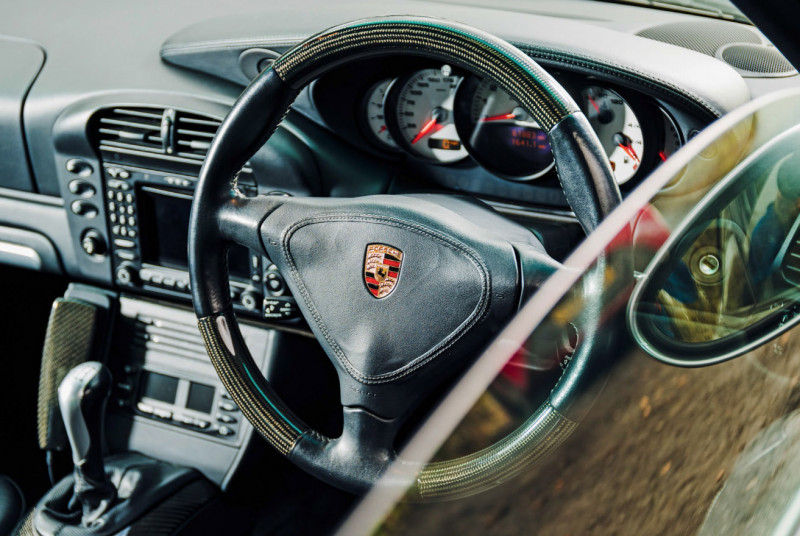
Given the predilection of buyers opting for the Cabriolet when the Turbo S was new makes the Coupe we’re in today rarer and more desirable. As does its standard fitment of the six-speed manual transmission, rather than the optional Tiptronic. Outwardly, there are few clues that reveal it’s an S rather than a regular Turbo. The yellow calipers of the PCCB brakes could feature optionally on a standard Turbo, leaving only the addition of the S behind the slightly left-shifted Turbo badge hinting that this car is something a bit more special than the already mighty Turbo.
The X50 Powerkit, which you’ll see mentioned in relation to many Turbos where it’s been optioned, sees the power increase from the 420hp of the Turbo to 450hp. That’s a useful gain, but it’s the torque growth that’s arguably more significant, with the Turbo S’s 620Nm being 60Nm greater than that of the Turbo. To achieve this the Turbo S’s specification closely follows the GT2’s, so it benefits from larger turbos, revised intercoolers and an ECU that’s specific to those. The S’s boosted power is produced slightly earlier in the rev range compared to the Turbo, with the S’s full 450hp arriving at 5,700rpm. That’s some 300rpm earlier than the Turbo’s 6,000rpm for 420hp. However, it’s the torque that’s more defining, insomuch as it comes a bit later, with the Turbo producing all of its 560Nm at 2,700rpm, and the Turbo S’s maximum of 620Nm arriving at 3,500rpm.
What’s significant is it feels like there’s more. The manner in which the S accelerates is shocking, even by today’s standards. With 3,000rpm on the rev counter it’s hugely fast, but add around 1,500rpm more and the Turbo S digs even deeper, with the result being ever-greater speed. All of which has always left me wondering if there’s not a bit of subterfuge in the specification of the Turbo S. Could it be more special than Porsche would have led you to believe? It wouldn’t be the first time Porsche created cars with more power than was officially quoted (as was the case with the 996 GT3 RS) to save the complications of homologation on a short run and, potentially, to prevent difficult questions being asked of a significantly more exotic, expensive model above it. Certainly, Porsche’s own press material in relation to the Turbo S is scant. It runs to just a few lazy paragraphs, while any mention of the Turbo S in reference texts is similarly lacking. More often than not it’s a footnote, with no real investigation beyond rolling out Porsche’s published 450hp output.
To drive suggests it’s more than that, and the intrigue only heightens when checking under the 996 Turbo S’s bonnet for the specification sticker. It reveals the engine code of M9670-645, and searching the usual sources produces the designation of GT2. The GT2 delivered a minimum of 462hp when launched, with Porsche subsequently (and quickly) upping that via some ECU revisions to a mightier 483hp and 640Nm of torque. Coincidentally, this was exactly the same number of revs that Porsche quotes for the lesser outputs of the Turbo S. This makes the Turbo S’s official numbers look and, more significantly, feel conservative.
That’s evident on our drive, as the climb out of the tight valley road opens to more expansive, sighted tarmac. Here, the 996 Turbo S’s bigger turbos force the 3.6-litre flat six to produce its greater power. The result is searing acceleration, with the 3.6 twin-turbo engine making light work of the quoted 1,590kg kerb weight. The 0-60mph time feels much quicker than the quoted 4.2 seconds, and the official top speed of 191mph is almost certainly conservative. I’d wager that weight is greater in this car, not least because further investigation of that under-bonnet sticker brings a further 14 option codes, which sees the interior covered expansively in natural leather and carbon fibre, as well as adding a sunroof into the mix. Betraying the Turbo S’s vintage is a centre console, featuring a PCM telephone handset and holders for CDs, as well as the gearstick that sprouts out from the carbon fibre-covered transmission tunnel.
There’s no complication; the Turbo S’s simplicity is so appealing, its analogue nature defining it. It’s an incredibly rounded, capable and desirable car. As that tight hairpin repeatedly reveals, there’s a delicacy to the way it drives. It feels light and accurate, with the front more eager on turn-in than its 996 Carrera relations. The four-wheel drive system delivers its accelerative hit in a manner that inspires huge confidence to exploit everything on offer. The suspension rides beautifully, helped no end by the reduced unsprung mass the PCCB brakes bring. There’s a suppleness about the car that enables it to shrug off poor road surfaces with ease. The way the suspension manages to control the body, even when pushing hard, never feels unruly, and while you’re always aware you’re in a 911, with its uniquely rear-biased layout, it’s to the Turbo S’s enormous benefit.
Most significantly, and in relation to the traction, the rear 38-inch combined rubber footprint and four-wheel drive means there’s no slip – just power translated into forward motion. It’s hugely enjoyable. Similarly, the brakes are adept at scrubbing off the easily gained speed. The Turbo S – so surefooted and able – feels wickedly fast. It would do so even when compared to the cars that have since followed it.
Yet for all its speed there’s still plenty of driver involvement, in a manner that’s lacking in later cars. That’s because there’s so much feel with it, too. The steering’s weighting is light, but it’s imbued with detail. It enables unerringly accurate placement on the road, which makes it possible for its enormous potential to be both utilised and enjoyed.
While there’s clear delicacy to it, there’s real weight in the clutch with this car – more than I recall from previous drives in Turbos/Turbo Ss. It’s not unwelcome or a hinderance, only serving as a reminder that sometimes the best things require a bit of effort. That’s true, too, of the gearshift, which feels weighty, but accurate and positive. Its movement in combination with that clutch is a real joy, whether you’re grabbing another ratio while tearing up the revs in pursuit of the S’s speed, or simply slipping another gear while in traffic.
The Turbo S is perhaps the most compelling demonstration of the enormous capability of the 911. Its ability to shrug off the mundane with assured ease, combined with the potential to produce an eye-widening performance means it’s not just in the supercar sphere, but chasing the tailcoats of hypercars. Indeed, the 996 Turbo S’s quoted (almost certainly conservatively) performance figures aren’t too far removed from the Carrera GT, which Porsche was producing at the time the 996 Turbo S was on the books, albeit briefly. Could that explain things?
I wouldn’t bet against it. The Turbo S – like so many of Porsche’s special models – comes across as greater than the sum of its quoted parts, and not just moderately so, with the difference feeling significant. If there’s an area it’s lacking it’s aurally. The Turbo S sounds good outside, but to drive there’s next to no stimulation from the exhaust. It’s muted, which might suit some, but I’d be exploring a more vocal arrangement to add to the compelling mix of poise and performance. However, if you want to retain its incredible under-the-radar capabilities then perhaps the standard pipes work best.
What’s undeniable is my expectation – that time would have dulled the 996 Turbo S’s appeal – is way off. The opposite proves to be true. This is a car that’s wrongly overlooked, and perhaps misunderstood in not just the 911’s history, but that of the 996. It’s an incredible car in isolation, but it’s even more so when you consider its age. This is a car that’s rapidly approaching a quarter century, yet feels quick, capable and hugely appealing to drive. It does all that in a manner that, unlike its GT relations, is useable. It’s not overtly defined by a singular element in its make-up, but rather is a brilliant demonstration of the 911’s roundedness and engagement. Crucially, this is apparent from any speed – not just the headline ones it’s so easily capable of.
“The rear 38-inch combined rubber footprint and four-wheel drive means there’s no slip – just power translated into forward motion”
ABOVE The Turbo S’s 3.6-litre flat six features the X50 Powerkit as standard for a 30hp boost RIGHT Kyle was thrilled at the car’s performance, but notes the noise of the Turbo S’s exhaust is slightly on the muted side.
ABOVE LEFT A six-speed manual transmission could be optionally replaced by Porsche’s Tiptronic gearbox
LEFT A Turbo S tends to have less miles on the clock owing to its rarity, but would make for a sublime daily driver


